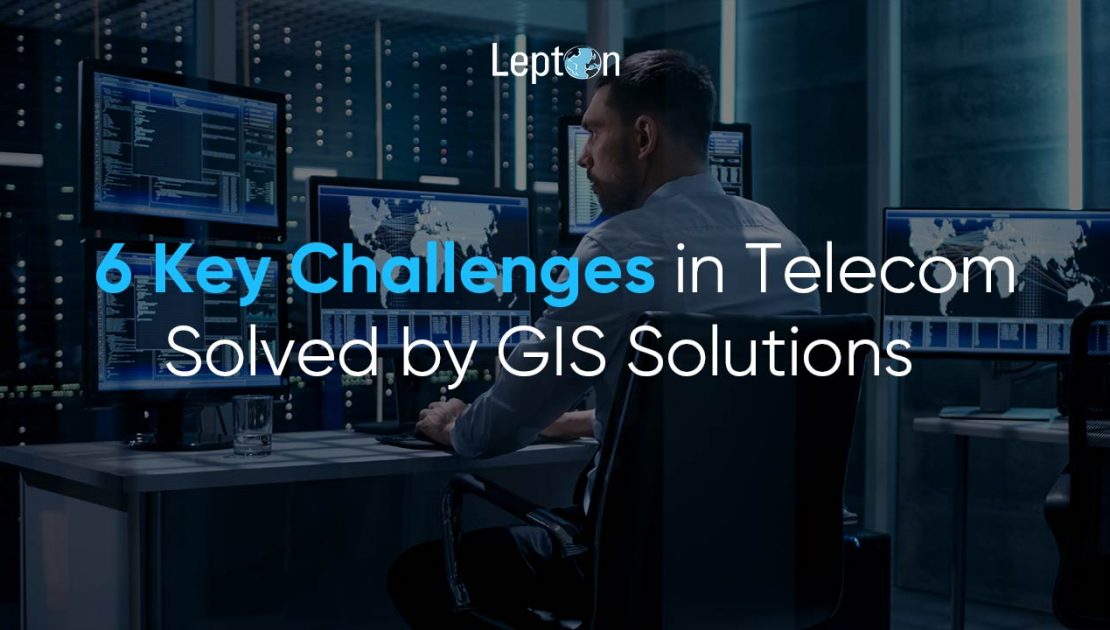One look at a bustling street and you’ll know the impact and the evolution of the telecommunications industry. The rise of 5G, fiber-to-the-home (FTTH), and IoT applications has led to an unprecedented demand for reliable, high-speed connectivity. Telecom operators have a goal to expand networks rapidly, ensure uninterrupted service, meet complex regulatory requirements, and manage a growing base of assets. At the same time, the customers also demand transparency, availability, and immediate service without any lag or interruption. It’s a perfect scenario which traditional systems often fall short of. And this happens due to geographic complexity, the scale of the operations, and real-time demands of modern telecom infrastructure. It is a vivid scenario which needs an ongoing flexible mechanism.
Role of GIS in today’s telecom sector
Ever since its inception, Geographic Information Systems (GIS) are transforming the way telecom networks are planned, built, managed, and optimized. By combining spatial data with advanced analytics and visualized dashboards, GIS empowers telecom operators to make faster, more accurate decisions. From route planning and asset management to regulatory compliance and customer support, GIS introduces clarity and control through data-driven insights that are derived from accurate location studies. The result is improved operational efficiency, reduced costs, and stronger customer experience. In this blog post, we cover the essential telecom challenges solved with the introduction of GIS solutions.
1. Network Planning Precision
Any planning requires uber precision and pin-point accuracy. And planning a telecom network is no different. Without geographic context of a location or of the task at hand, the end results are often marred in inefficiencies such as redundant coverage, signal blackspots, and excessive capital expenditure. GIS in telecommunications changes this by enabling precise spatial analysis of terrain, population density, and signal propagation. Using solutions that simulate coverage based on topography and urban structures, operators can optimize tower placements, fiber rollouts, and small cell deployments. This not only maximizes service coverage but also ensures optimal use of network components, reduces planning errors, and supports scalable deployment strategies, particularly essential in 5G environments. It is a USP which balances fiscal investment and resources with the output.
2. Right-of-Way (RoW) Management
Securing Right-of-Way permissions is one of the most time-consuming aspects of telecom infrastructure projects. It is a process which for long has required manual intervention which dealt with disconnected data sources leading to operators often facing roadblocks due to inaccurate land records, unclear utility lines, or overlapping infrastructure. GIS brings transparency and efficiency to RoW management by offering detailed visualizations of land ownership, existing assets, utility corridors, and legal boundaries. By providing updated datasets on a single digital map, telecom companies can proactively plan routes, reduce legal complications, and speed up approval processes ensuring faster and more cost-effective project execution.
3. Asset Management Visibility
A telecom network has a lot of interconnected nodes of which one of the key aspects is assets management. As the amount of equipment increases, so does the challenge of managing it. This gets accounted from underground cables and poles to data centers and antennas across vast geographies. Keeping these assets updated, maintained, and accessible is a logistical nightmare without centralized visibility and digital twin capabilities. GIS enables real-time telecom asset management by integrating all physical infrastructure into an interactive geospatial platform. Operators can track each asset’s location, status, ownership, and maintenance history while also giving heads up to schedule timely maintenance cycle. This not only improves field operations and inventory accuracy but also supports reduced downtime and extends asset lifecycles saving crores in operational costs.
4. Emergency Response Coordination
While the motive for faster connection is seamlessly on track, the telecom sector has a bigger responsibility in creating a foolproof infra for emergency response system. In emergencies like natural disasters, power outages, or cyberattacks, lack of geospatial context can lead to poor identification of affected zones, badly prioritized restoration efforts, and ill-coordinated teams. GIS for emergency response bridges this gap by providing real-time mapping of network status, damage zones, and nearby service resources. It enables faster impact assessment, helps reroute services when necessary, and allows better communication between control centers and field staff. This rapid coordination minimizes service disruption and protects public safety.
5. Regulatory Compliance Assurance
Navigating the complex landscape of environmental regulations, construction laws, and zoning restrictions can have a retrograde effect which later takes shape in delayed network rollouts resulting in hefty penalties if overlooked. Traditional planning tools lack the ability to overlay spatial constraints effectively which create a bottleneck in legal compliances. GIS makes regulatory compliance easier by layering environmental, zoning, and urban planning data onto infrastructure maps. This helps operators assess regulatory constraints early in the planning phase, avoid restricted areas, and submit accurate documentation to government bodies.
6. Customer Service Optimization
If a business needs to scale based on its capabilities, it must ensure that it focuses big time on user experience. And this hinges on accurate and transparent service availability, especially in highly competitive markets. To stand true to the promise made to the customers, it is essential that installations or designated services take place on time. Falling short leads to frustration and churn. GIS enables precise customer service optimization by offering building-level service maps that account for real-world conditions like terrain obstructions and signal interference. This allows sales and support teams to provide accurate availability updates, recommend best-fit services, and plan installations more efficiently. It avoids the scenario where users are left wanting for services with no resolution provided.
Final Word
The telecom industry’s future depends on smart, scalable, and geospatially aware operations. With expansion on plate and more technological breakthroughs in pipeline, GIS provides telecom operators with a comprehensive view of their network ecosystem. From planning and deployment to maintenance and customer engagement, GIS addresses key pain points such as inefficient planning, regulatory hurdles, asset tracking, and emergency response.
If you are a telecom professional looking to improve operational efficiency, accelerate network deployment, and enhance customer satisfaction, find out how Lepton Software integrates GIS into its telecom solution which caters every facet from operation to inventory to feasibility and end-to-end planning. Connect with our sales team now and dive into the amazing capabilities of GIS.

